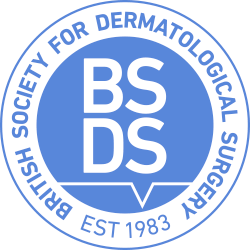Random Local Flap – Rotation
Simple Rotation Flaps
The defect is covered by rotating the skin from one side. On skin with little elasticity, for example the scalp and back of the hand, the arc should be long enough to create a flap whose area is 3 to 4 times the area of the primary defect. On more movable and elastic skin, for example the cheek and forehead, the arc may be shorter.
The shorter defect is closed by side-to-side suturing. The sides will be of an unequal length depending upon the degree of rotation. This may necessitate a Burow’s triangle correction at the end of the larger side.
To facilitate rotation, a back-cut may be used. This must not be long otherwise it will reduce the width of the flap pedicle.
Rotation flaps from opposite sides of a defect results in an O – Z closure. The two flaps not only rotate but advance to close the primary surgical defect.
